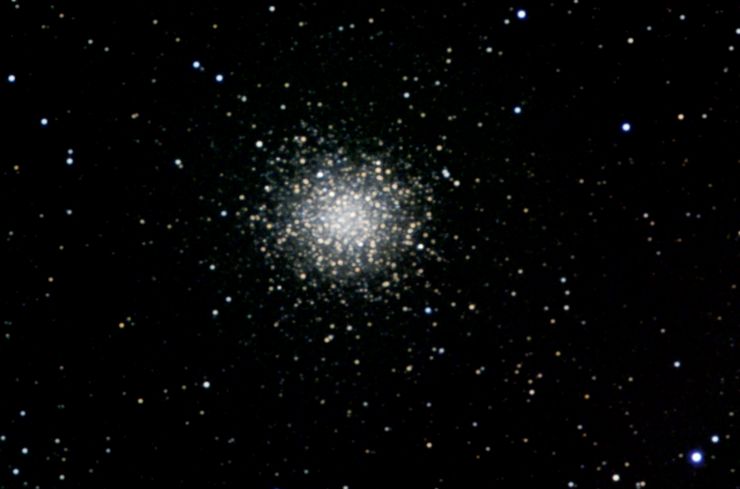
M14 is a globular star cluster without a sharp central condensation. The distribution of light across the globular is relatively smooth, with only a gradual tapering off at the outer edges. Viewed through an amateur size instrument, it looks like a ball of diamond dust. M14 is located in Ophiuchus near the center of the Milky Way Galaxy where most of the globular clusters hang out. This cluster is located farther away from us than M10 or M12, which are in the same region of the sky. M14 is approaching us at about 77 miles per second.
M14 was discovered by Messier in June 1764. In his primative telescope it looked like a round "nebula without stars." It is located near a number of other globular clusters, and was discovered only a few days after M9 and M10. In 1783, William Herschel observed it with a better telescope and resolved a number of stars in the cluster.
M14 is one of only two globular clusters in which a nova has appeared. In 1938, a nova was detected in M14 on photographic plates taken with a 74-inch reflector. The only other known example of a nova in a globular cluster occurred in 1860 in M80. M14 is also somewhat distinctive in that it has a relatively large number of variable stars.
This is an RGB color CCD image taken with an ST-8E CCD on a Takahashi FS-128 refractor. The image was taken from my backyard.
M14 (NGC 6402)
Constellation: Ophiuchus
RA: 17h 37m 49.7s Dec: -03d 15' 21"
April 25, 2004
Image by Sid Leach
Scottsdale, Arizona
Recent Images.
Complete list of images.
Description of equipment used to acquire images.
Home
Feedback and comments should go to Sid